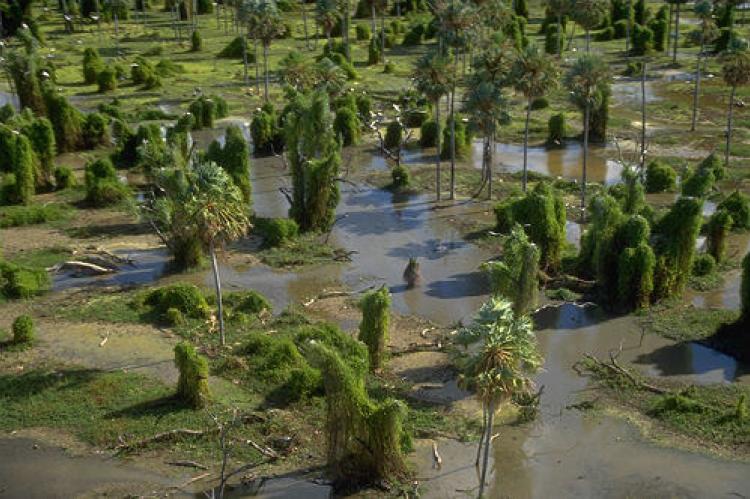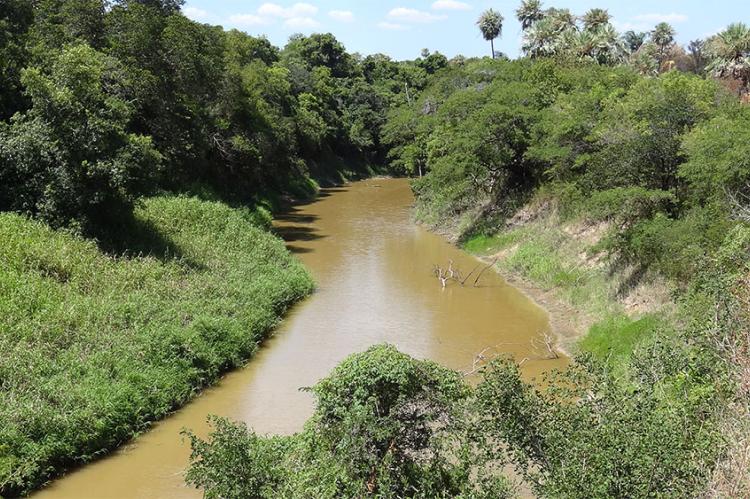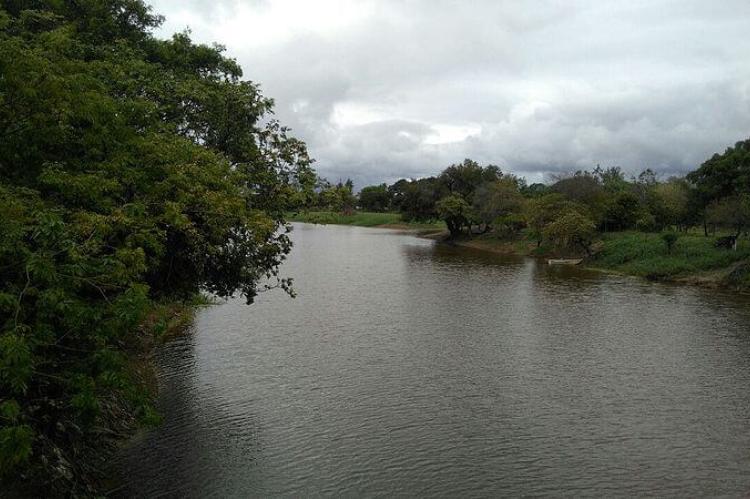Río Pilcomayo National Park: A Riverine Sanctuary in Northern Argentina
Nestled in the northeastern corner of Argentina, close to the Paraguayan border, lies Río Pilcomayo National Park. This protected expanse encompasses a mosaic of wetlands, forests, and savannas, showcasing the unique beauty and biodiversity associated with the Pilcomayo River.
Río Pilcomayo National Park: A Riverine Sanctuary in Northern Argentina
Nestled in the northeastern province of Formosa, Argentina, near the border with Paraguay, the Río Pilcomayo National Park stands as a testament to the country's commitment to preserving its rich natural heritage. This protected area, established in 1951, encompasses 51,889 hectares (128,220 acres) of diverse ecosystems, showcasing the unique beauty and biodiversity associated with the Pilcomayo River, a vital watercourse that weaves through the region.
Topographical Diversity
A Mosaic of Habitats
Río Pilcomayo National Park boasts a varied topography, contributing to its ecological richness. The terrain ranges from low-lying riverbanks to elevated grasslands, creating a mosaic of habitats that support a diverse array of plant and animal life. This topographical diversity is critical in shaping the distinct ecosystems within the park's boundaries.
The Pilcomayo River: A Lifeline of the Region
At the heart of the park lies the region's lifeblood—the Pilcomayo River. This vital watercourse meanders through the park, dictating the landscape and providing sustenance to the myriad ecosystems along its banks. The river's hydrography is characterized by seasonal fluctuations, influencing the formation of wetlands, gallery forests, and floodplain areas that contribute to the park's ecological tapestry.
Climate and Hydrological Cycles
Subtropical Influences
The climate of Río Pilcomayo National Park is influenced by its location in the subtropical region. The area experiences distinct wet and dry seasons, with the river's water levels rising during the wet season and receding during the dry season. This climatic variability is crucial in shaping the park's ecosystems, fostering conditions suitable for diverse plant and animal species to thrive.
Seasonal Inundations and Wetlands
During the wet season, the Pilcomayo River and its tributaries flood the nearby areas, creating large swaths of interconnected lakes and marshes, most of which are temporary. These seasonal inundations are vital in maintaining the park's dynamic wetland ecosystems.
Laguna Blanca: A Haven for Waterfowl
In the park's southern end, a large lake called Laguna Blanca is a habitat for many waterfowl species and a resting point for migratory bird species. This permanent water body is a critical component of the park's ecological web, providing a refuge for aquatic life and attracting diverse avian visitors.
Cultural Heritage
Indigenous Stewardship
Río Pilcomayo National Park is not just a wildlife sanctuary; it also holds a significant cultural heritage. The Toba and Pilagá indigenous communities have inhabited these lands for centuries, leaving a legacy of traditions and profound respect for the environment. Their intimate connection with the land and its resources has shaped the park's landscape and contributed to its conservation over time.
Biodiversity Riches
A Tapestry of Life
Río Pilcomayo National Park is renowned for its exceptional biodiversity, harboring a rich array of flora and fauna within its borders. The park's diverse ecosystems include gallery forests along the riverbanks, wetlands, and expansive grasslands, each supporting a unique assemblage of plant and animal species.
Charismatic Fauna
Among the charismatic fauna found within the park are capybaras, the largest living rodents, and the elegant marsh deer, adapted to life in the wetlands. Reptiles such as caimans also call the park home, adding to the diversity of the region's wildlife.
Avian Spectacle
Birdwatching enthusiasts are treated to a spectacle of over 300 documented bird species within Río Pilcomayo National Park. Herons, ibises, parrots, and waterfowl grace the park's skies and waters, offering visitors a glimpse into the region's avian diversity. The park's significance as a migratory route and a habitat for resident and migratory birds further underscores its ecological importance.
Conservation Efforts and Challenges
While Río Pilcomayo National Park is a sanctuary for biodiversity, it faces conservation challenges, including human activities such as agriculture and infrastructure development. Conservation efforts within the park focus on sustainable management practices, preserving the Pilcomayo River's flow, protecting critical habitats, and engaging local communities in responsible environmental stewardship.
Through collaborative efforts involving government agencies, conservation organizations, and indigenous communities, initiatives are underway to mitigate threats and ensure the long-term preservation of this riverine sanctuary. By fostering a harmonious coexistence between human activities and the park's ecological processes, the Río Pilcomayo National Park can continue to thrive as a vital biodiversity hotspot, safeguarding its natural and cultural heritage for future generations.



